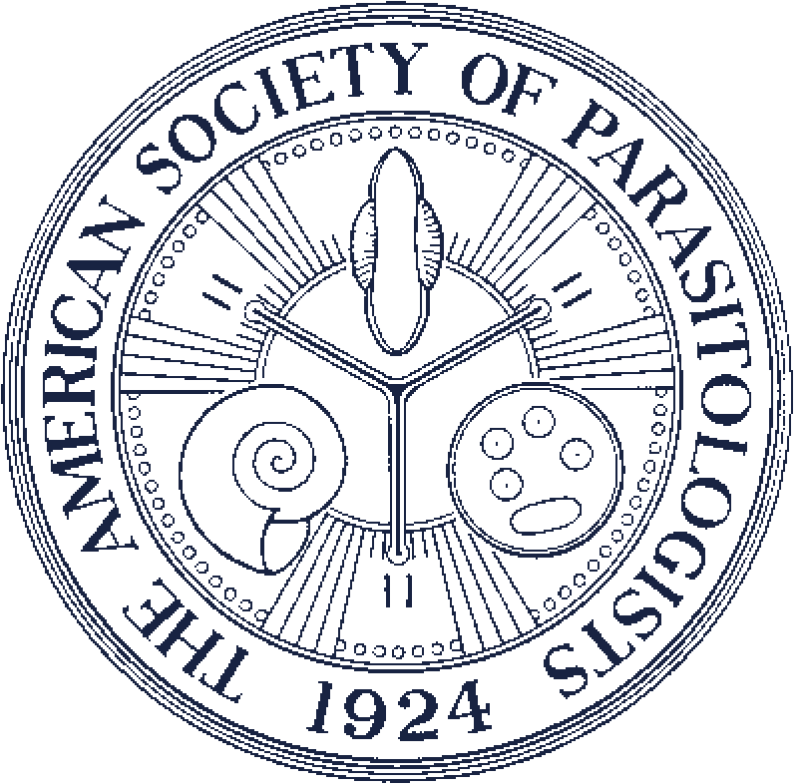PATHOLOGY AND MOLECULAR IDENTIFICATION OF DEVELOPING HENNEGUYA SPP. ACTINOSPORES WITHIN THE INTESTINAL EPITHELIUM OF DERO DIGITATA DURING AN OUTBREAK OF PROLIFERATIVE GILL DISEASE IN A COMMERCIAL CATFISH POND
Dero digitata, a freshwater oligochaete worm found worldwide, serves as the definitive host for the myxozoan Henneguya ictaluri, the cause of proliferative gill disease (PGD) in ictalurid catfish. The study objectives were to describe pathologic changes associated with developing actinospores within D. digitata from a commercial catfish pond during an active PGD outbreak. Specific in situ hybridization probes identified H. ictaluri, Henneguya exilis, and Raabeia-type TGR 2014 actinospore development in pure infections associated with intestinal epithelial hypertrophy, hyperplasia, and vacuolation. Results support findings from other myxozoans demonstrating clonal expansion of myxozoan populations occurs through asexual reproduction of the oligochaete host.Abstract

Photomicrographs of histological sections demonstrating Henneguya spp. actinospore development and associated pathology within the intestine of Dero digitata. (1) Unaffected intestine lined by a single, organized layer of cuboidal to low columnar enterocytes. Hematoxylin and eosin (H&E). (2) Hypertrophy, hyperplasia, and vacuolation (white arrows) of the mucosal enterocytes with multifocal, embedded, early forming pansporocysts (black arrows). H&E. (3) Pansporocyst development disrupts and expands the intestinal epithelium while markedly narrowing the lumen (asterisks). H&E. (4) Asynchronous pansporocyst development with advanced stages containing developing actinospore bodies (black arrows) with non-staining polar capsules (white arrows). H&E. (5) Polar capsules (arrows) stain deep purple with Gram stain. Modified Brown-Hopps. (6) Polar capsules (arrows) stain metachromatic with Giemsa stain. Color version available online.

Photomicrographs of histological sections demonstrating the identification of Henneguya ictaluri, Henneguya exilis, and Raabeia-type TGR 2014 pansporocysts and developing actinospores within the intestinal epithelium of Dero digitata using in situ hybridization (ISH). (7) Early and advanced pansporocyst development of H. ictaluri with thickening of the mucosal lining and narrowing of the intestinal lumen. Hematoxylin and eosin (H&E). (8) Corresponding photomicrograph to Figure 7 demonstrating green chromogen labeling of Henneguya ictaluri pansporocysts. H. ictaluri/Hhenneguya exilis Duplex Chromogen ISH. (9) Early pansporocyst development of H. exilis with epithelial hypertrophy, hyperplasia, and vacuolation. H&E. (10) Corresponding photomicrograph to Figure 9 demonstrating red chromogen labeling of H. exilis pansporocysts. Note the presence of extraintestinal pansporocysts (arrows). Henneguya ictaluri/H. exilis Duplex Chromogen ISH. (11) Pansporocyst development (arrows) of a Raabeia-type actinospore described by Rosser et al. (2014). H&E. (12) Corresponding photomicrograph to Figure 11 demonstrating red chromogen labeling of Raabeia type TGR 2014 pansporocysts. Henneguya mississippiensis/Raabeia ISH. Color version available online.
Contributor Notes
